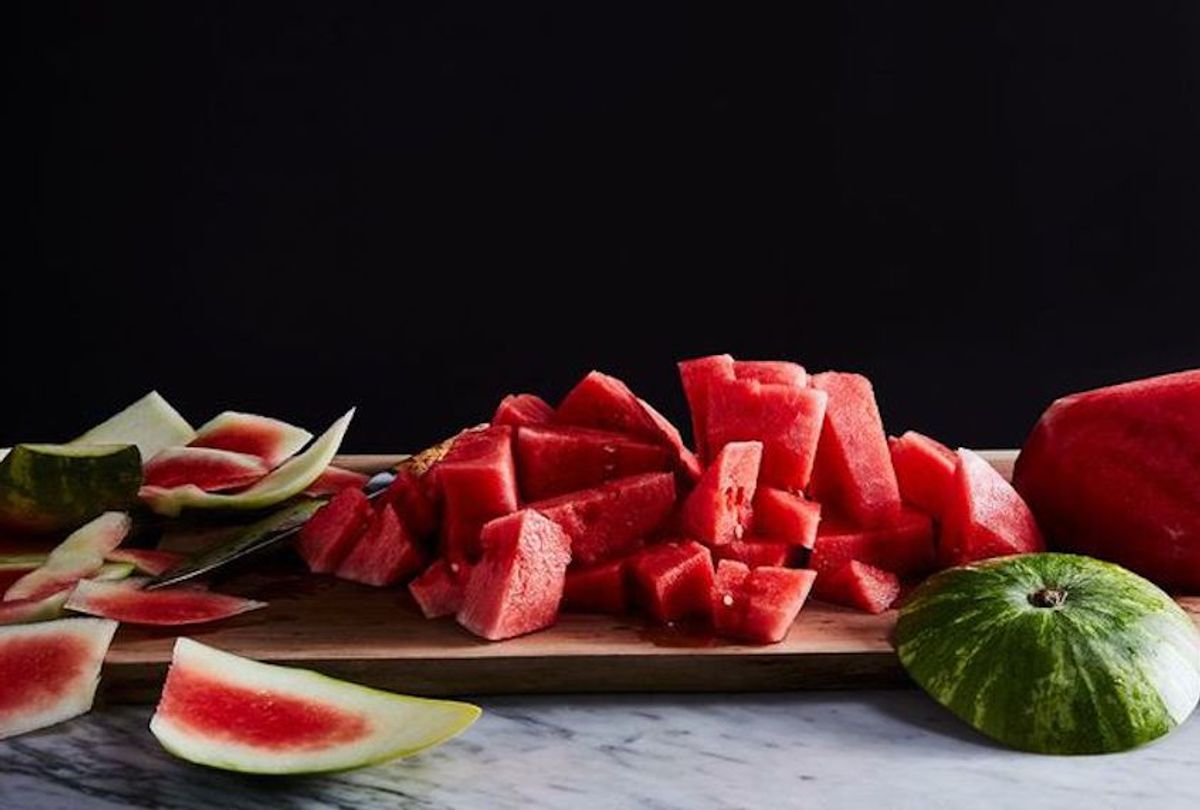fridge (or cooler) or blending up chunks for a refreshing slushy cocktail, watermelon is a summer classic.
Picking out just-the-right watermelon can be tricky since there aren't many external signifiers, and you can't just give it a squeeze to see if it's softened, like you would with other fruits. There are, however, a few things you can look out for, and do, to ensure you've got a melon that's ready to eat.
Here's how to pick out a watermelon, plus a few ideas for what to do with it at home this summer (oh hi, watermelon Campari granita).
* * *
How to pick a watermelon
1. First things first: Pick it up. Even though watermelons vary in size, it should feel heavy whether it's large or small.
2. You've probably heard that you can give watermelon a tap or a knock and, if the melon sounds hollow, then you've got a winner. This isn't a foolproof method because it's pretty unreliable and more or less subjective. "While plenty of people swear by a quick knuckle-rap on a melon's surface," writes Nozlee Samadzadeh in our guide to all sorts of melons, "the best way to tell is by turning the melon over."
"If the yellow-brown patch where the melon lay on the soil is pronounced, large, and dirty, it's a good sign that it has been growing for a while," she explains. You'll want to steer clear of watermelons with a patch (also known as a field or ground spot) that's white or non-existent.
3. Another handy tip for picking watermelon: The prettiest watermelon probably isn't the sweetest. According to Maki Yazawa for Real Simple, the more matte or dull-looking the watermelon, the better. "If the melon is very shiny, it is likely underripe," she says.
4. Spots can also be a good sign. "Dry weathering spots and vein-like webbing lines are great indicators of an extra sweet watermelon," she explains. "These spots show where sugar has been seeping out of the fruit" and onto the rind.




Shares